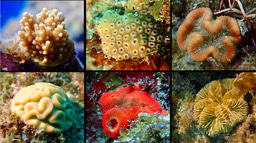Bioactive compounds and antioxidant activity in various parts of Morus alba L. Cv. ichinose: a comparative analysis
Published in Agricultural & Food Science

Every research journey begins with a question, and mine was simple yet profound: What if the mulberry, a staple in sericulture, held untapped potential beyond just feeding silkworms? This question led me to dive deep into the Morus alba L. Cv. Ichinose variety, curious about the hidden treasures within its leaves, shoots, roots, and fruit.
Growing up in Kashmir, I was always surrounded by mulberry trees. These trees were more than just a backdrop to my childhood; they were a source of endless fascination and joy. As a child, my school had a garden full of mulberry trees, and they quickly became my favorite part of the day. I would eagerly wait for school to end, knowing that a handful of mulberries awaited me. However, being too small to reach the branches, I had to get creative. The security guard’s chair became my secret weapon. With a quick climb, I’d reach the branches, pluck the ripe berries, and savor their sweetness. Of course, this often left my hands, mouth, and even my school uniform stained with the deep purple juice. Those stains would earn me a good scolding from my mom after school, but at that time, the thrill of the mulberries was worth it.
Little did I know that those same staining pigments, which once got me into trouble, would later become my first contribution to the scientific community. Those pigments, known as anthocyanins, were the subject of my very first research paper. Mulberries, which grow abundantly in Kashmir but are often overlooked in favor of more 'luxurious' berries, turned out to be a treasure trove of health benefits. Through my research, I successfully identified several flavonoids in the mulberry fruit, highlighting their potential as a health-promoting superfood. What was once just a childhood indulgence transformed into a scientific discovery, proving that even the most humble and underrated fruits can hold immense value.
As I pursued higher education, my fascination with the mulberry deepened, leading me to undertake a comprehensive study of the Morus alba L. Cv. Ichinose variety. The focus of my research was to investigate the bioactive compounds within different parts of the mulberry plant—namely, the fruit, root, shoot, and leaf—and to evaluate their antioxidant potential. Using advanced techniques like High-Performance Liquid Chromatography (HPLC) and various antioxidant assays, I meticulously analyzed each part of the plant to quantify its phenolic acids, flavonoids, anthocyanins, and carotenoids.
The results were nothing short of astonishing. The fruit of the Ichinose mulberry, in particular, stood out with its remarkable concentrations of total phenols (533.8 ± 15.6 mg/100 g), total flavonoids (232.3 ± 7.1 mg/100 g), and total anthocyanins (142.5 ± 3.1 mg/100 g). These compounds are known for their strong antioxidant properties, and their high levels in the mulberry fruit suggested that it could be a powerful natural source of antioxidants. In contrast, the leaf was found to be rich in ascorbic acid (70.9 ± 3.1 mg/100 g) and beta-carotene (2.1 ± 0.3 mg/100 g), both of which are vital for human health.
The predominant phenolic acids identified in the mulberry included ferulic acid, m-coumaric acid, syringic acid, caffeic acid, chlorogenic acid, and gallic acid. These acids are known for their various health benefits, including anti-inflammatory, antimicrobial, and anticancer properties. In the fruit, quercetin and isoquercetin were the major flavonoids detected. Quercetin, in particular, is a well-known antioxidant that has been extensively studied for its potential to protect against heart disease, cancer, and other chronic illnesses. In terms of anthocyanins, the fruit contained cyanidin-3-rutinoside (25.6 ± 2.3 mg/100 g) and cyanidin-3-glucoside (16.4 ± 2.1 mg/100 g), both of which contribute to the deep purple color of the berries and are associated with numerous health benefits, including improved cardiovascular health and reduced risk of neurodegenerative diseases.
When it came to antioxidant activity, the fruit again emerged as the star of the show. Using a variety of assays, including 2,2-diphenyl-1-picrylhydrazyl (DPPH), Ferric Reducing Antioxidant Power (FRAP), β-carotene bleaching (BCBA), and Hydroxyl Radical Scavenging Activity (HRSA), I was able to demonstrate that the fruit had the highest antioxidant activity among all the parts examined. The EC50 values, which indicate the concentration required to achieve 50% of the maximum antioxidant effect, were particularly revealing. The fruit had an EC50 of 174.2 ± 2.2 μg/mL, compared to 179.6 ± 2.3 μg/mL for the root and 189.4 ± 2.1 μg/mL for the shoot. These findings suggested that the fruit could potentially serve as a potent antioxidant, with a greater hydroxyl radical scavenging effect than even standard antioxidants.
The implications of these results extend far beyond sericulture. The Ichinose mulberry, with its potent antioxidant properties and high anthocyanin content, holds promise as a natural colorant for the food and pharmaceutical industries. In an era where consumers are increasingly seeking natural alternatives to synthetic additives, the Ichinose mulberry offers a viable solution. Its deep purple anthocyanins could be used to enhance the color and nutritional value of various products, from beverages to cosmetics.
Furthermore, the richness of bioactive compounds in the Ichinose mulberry positions it for nutraceutical applications. With its high levels of phenolic acids, flavonoids, and anthocyanins, the mulberry fruit could be developed into supplements aimed at promoting health and well-being. Its antioxidant properties could help combat oxidative stress, which is linked to aging, cancer, and other chronic diseases. In this way, mulberry could play a significant role in preventive healthcare, offering a natural and accessible means of improving health outcomes.
Reflecting on this research journey, I realize that sometimes, the answers we seek are found in the most familiar places—like the mulberry trees of my childhood. By expanding the cultivation of the Ichinose mulberry, we can not only strengthen the sericulture industry but also tap into new markets, creating a multifunctional crop that benefits both human health and industry. The potential applications of this research are vast, ranging from enhancing the nutritional value of silkworm diets to developing new products for the food, pharmaceutical, and nutraceutical industries.
In the end, this paper is not just about scientific discovery; it is about reconnecting with my roots and finding new value in something I have known all my life. It is a testament to the idea that sometimes, the most significant innovations come from re-examining what we already know, with a fresh perspective and a curious mind. The journey from childhood indulgence to scientific discovery has been deeply fulfilling, and I am excited to see where the exploration of the Ichinose mulberry will lead next. Whether it’s in the laboratory, the marketplace, or the fields of Kashmir, the future of this remarkable plant is full of possibilities.
Follow the Topic
-
Discover Life

Previously Origins of Life and Evolution of Biospheres. Discover Life is a fully open access, peer-reviewed journal that supports multidisciplinary research and policy developments across all fields relevant to life science.
Related Collections
With Collections, you can get published faster and increase your visibility.
Biomolecular Condensates in Physiology and Disease
Biomolecular condensation, involving the assembly of membrane-less bodies composed of proteins and/or nucleic acids through phase separation, is a crucial area of research with significant implications for cell biology, biochemistry, and medicine. Aberrant phase separation of cellular proteins has been linked to critical malfunctions in cellular processes and various diseases.
In multiple diseases and physical activities, the features of cellular proteins, such as intrinsically disordered regions and folded domains, play critical roles in mediating multivalent interactions. This often results in the hijacking of components of signaling cascades, protein synthesis, and degradation machinery. Condensates are also associated with chromatin remodeling and regulation of the transcriptional machinery, driving pathological processes with adverse clinical outcomes. These observations highlight the urgent need to assess biomolecular condensates as therapeutic targets.
This collection aims to feature reviews and articles focusing on life science research across a broad spectrum of paradigms, from in vitro studies to investigations in cells and patient-derived models, as well as clinical experimentation. Key areas of emphasis include:
• Investigation of the sequence features driving aberrant phase separation of biomolecules such as proteins, DNA, and RNA in disease.
• Application of advanced imaging and spectroscopy techniques to gain insights into the spatiotemporal dynamics of condensates in cells.
• Integration of multi-omics data to provide a comprehensive view of the molecular landscape associated with condensates in disease.
• Development of therapeutic approaches targeting aberrant phase separation to combat diseases.
Keywords:Biomolecular condensation, Phase separation, Oncoproteins, Stress granules, Transcription factors, Tumor progression, Oncogenic Signalling, Cancer
Publishing Model: Open Access
Deadline: Dec 31, 2025
Biotechnological Innovations in the Detection, Treatment, and Prevention of Zoonotic Diseases
Zoonotic diseases represent a pressing global health challenge, as wildlife often serves as reservoirs for pathogens capable of crossing species barriers. Increasing interactions among humans, animals, and the environment have amplified the risk of zoonotic and emerging infectious disease outbreaks. Transmission pathways—including food, water, and environmental exposure—have facilitated the spread of highly pathogenic viral zoonoses such as influenza, COVID-19, Nipah, and Mpox. Their pandemic potential underscores the urgent need for robust research, surveillance, and public health response systems.
While traditional clinical methods—such as immunological assays, nucleic acid detection, and gene sequencing—remain essential for pathogen identification, modern biotechnology is revolutionizing the field. Emerging technologies including network pharmacology, polypharmacology, computational modeling, artificial intelligence, nanotechnology, immunoinformatics, and cheminformatics are breathing new life into traditional medicine and accelerating innovation in diagnostics, drug discovery, vaccine development, and personalized treatment strategies.
This Collection aims to showcase original research and reviews that highlight cutting-edge developments in biotechnology and their application to the detection, treatment, and prevention of zoonotic diseases. By fostering collaboration among researchers, clinicians, and industry experts, the Collection seeks to advance our understanding of zoonotic infections and promote innovative therapeutic solutions.
We welcome contributions on the following topics:
• Advances in pathogen detection and diagnostics
• Drug discovery and development from traditional medicine
• Artificial intelligence and computational approaches in drug discovery
• Drug repurposing and personalized medicine for zoonotic diseases
• Vaccine design and immunomodulation in zoonotic infection treatment
Keywords: Zoonotic diseases/infection, traditional Medicine, drug repurposing, network pharmacology, polypharmacology, Artificial intelligence-driven approaches, drug discovery, prevention and detection
This Collection supports and amplifies research related to SDG 3.
Publishing Model: Open Access
Deadline: May 01, 2026






Please sign in or register for FREE
If you are a registered user on Research Communities by Springer Nature, please sign in